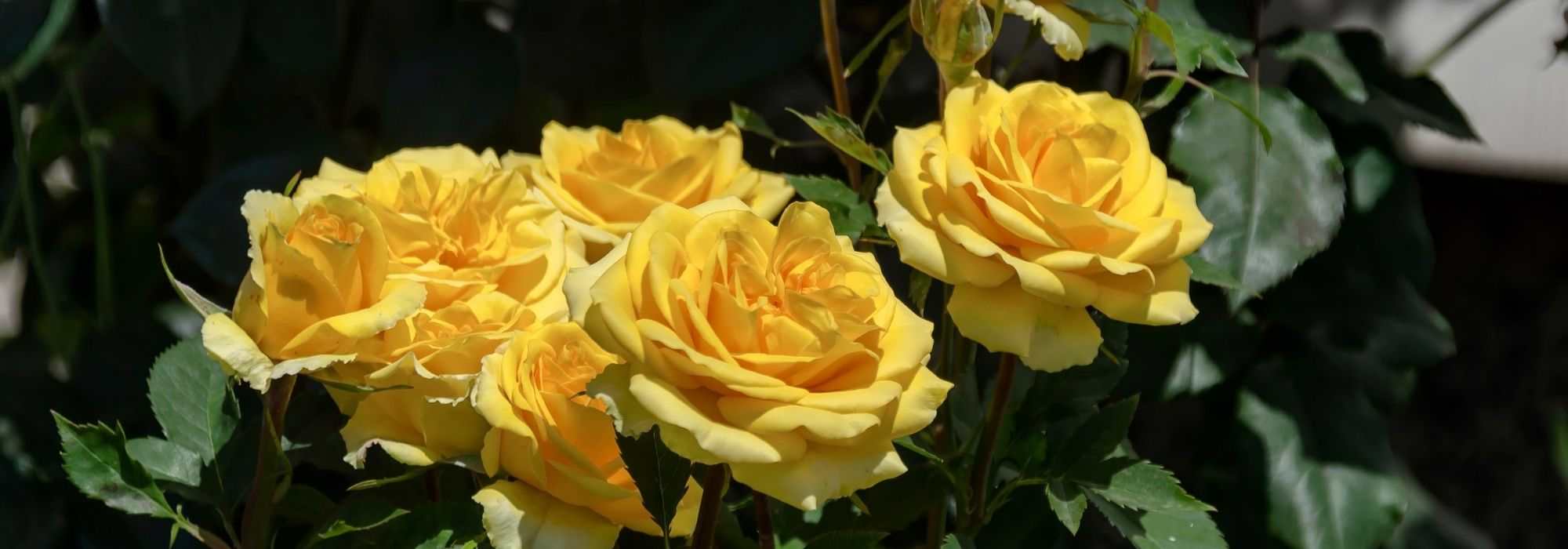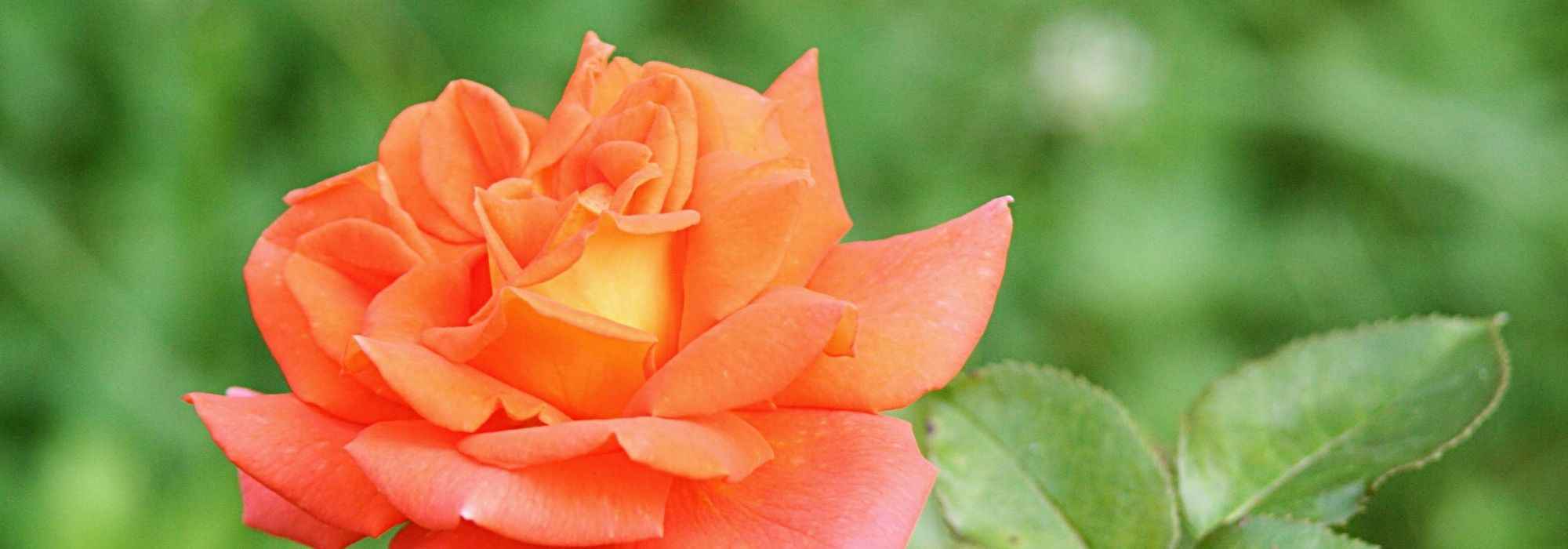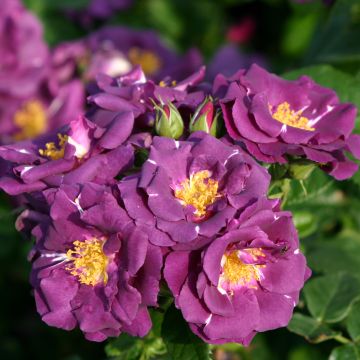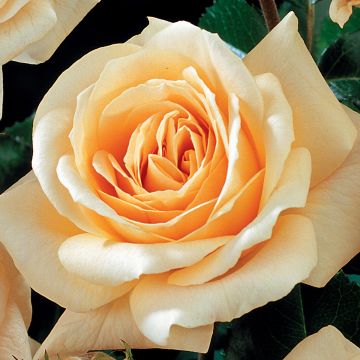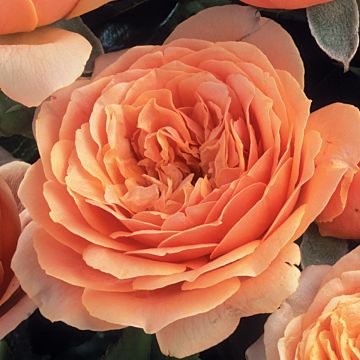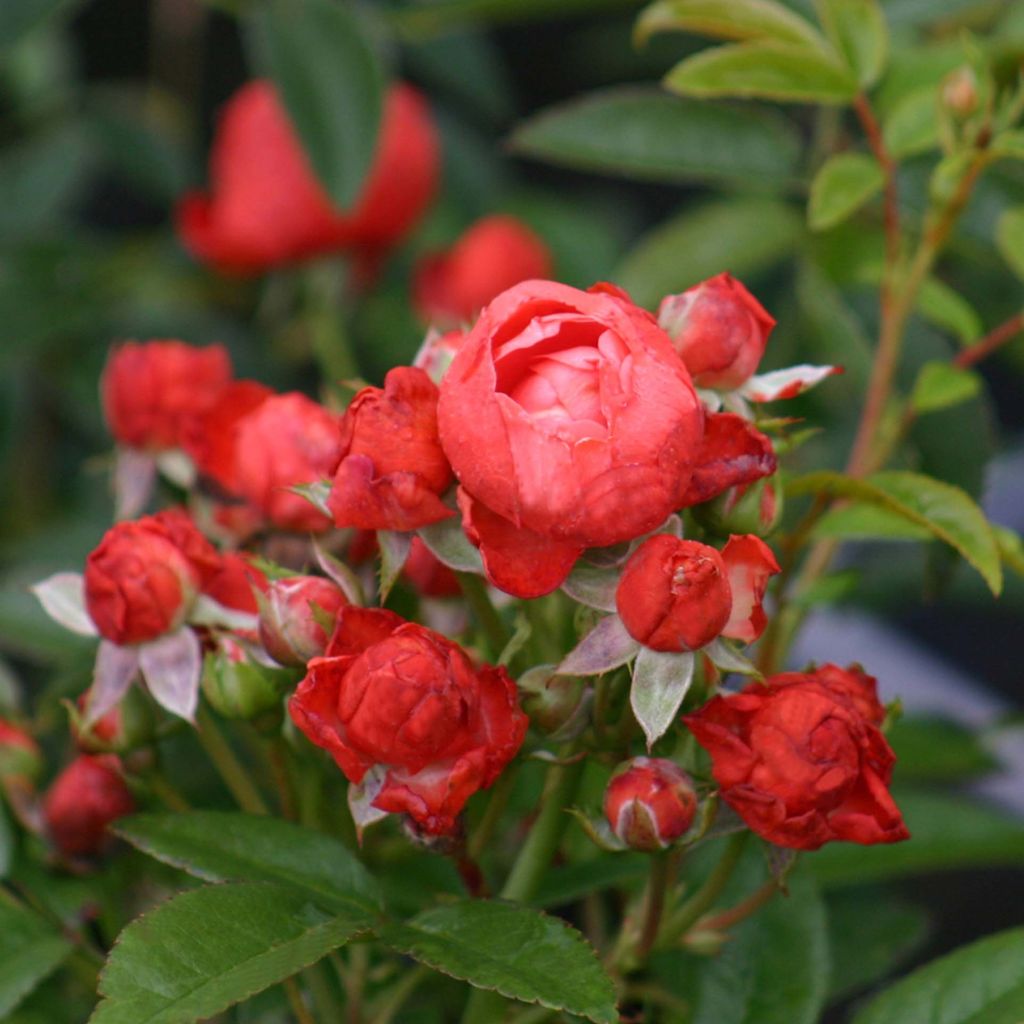

Rosa x polyantha 'Fête des Pères' - Miniature Rose
View more pictures
Hide images
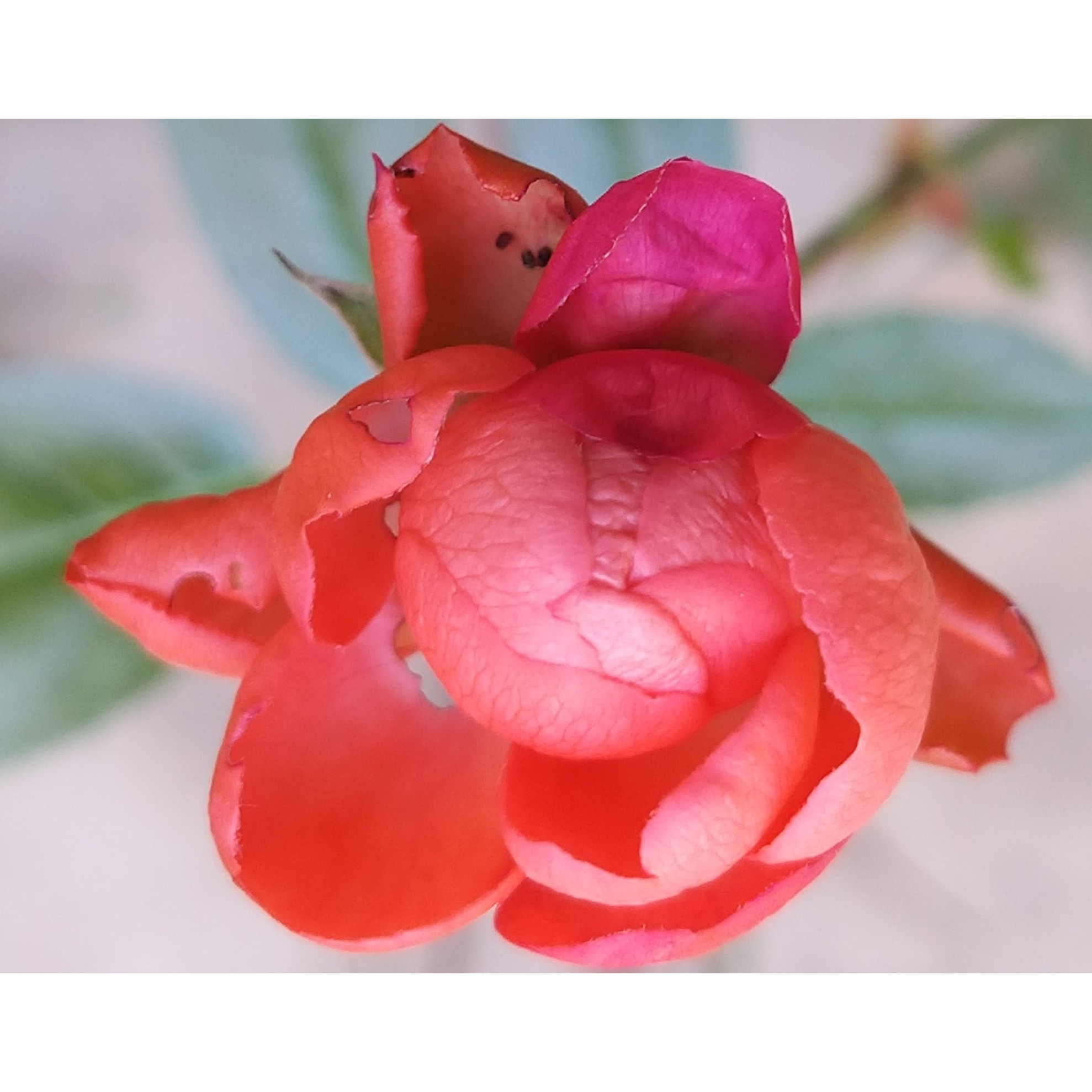
Thierry P.

Flowering in January - image 5 - Early blooming rose, at the beginning of the year it's already starting to bloom.
Thierry P. • 84 FR
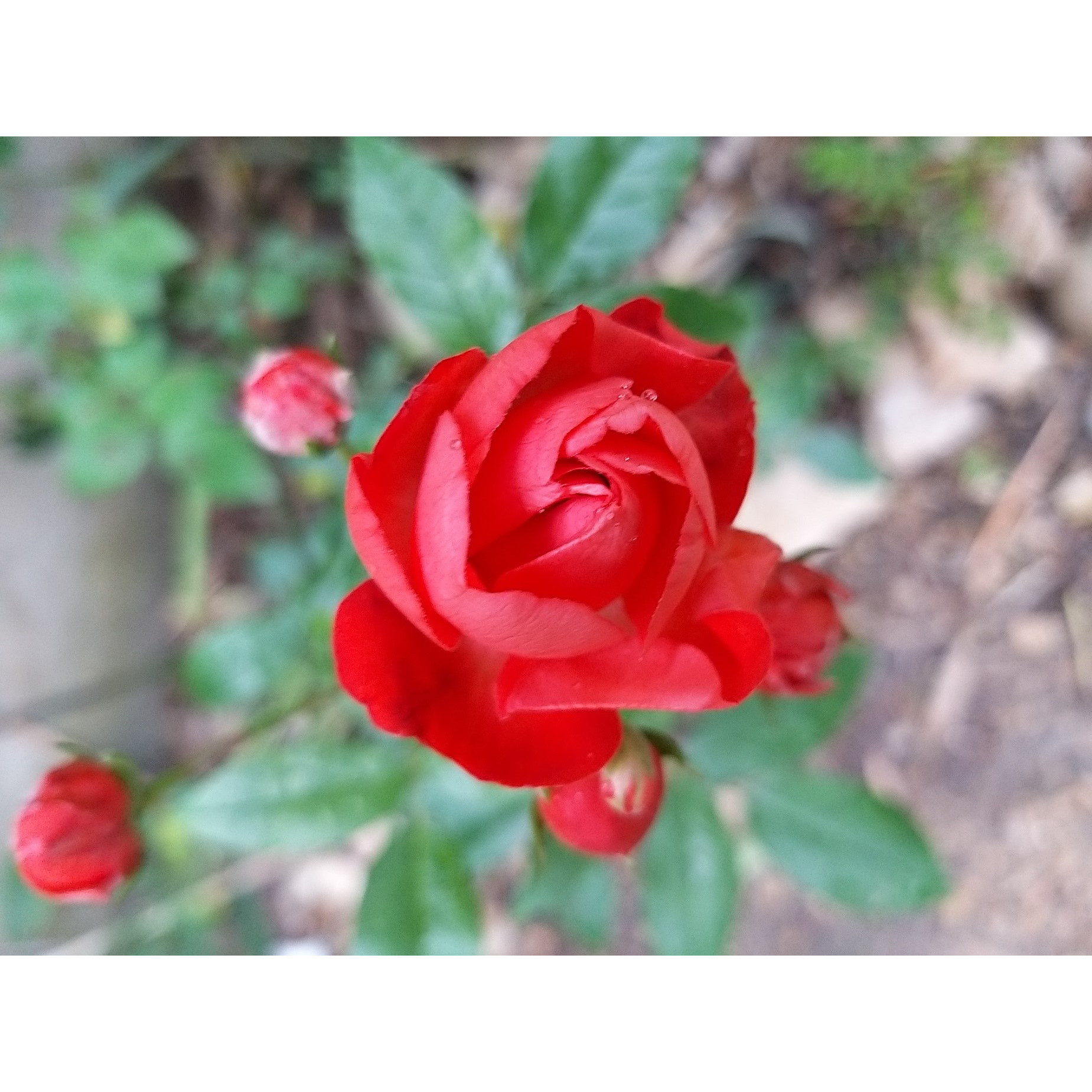
Thierry P.

May flowering - picture 1 - orange version of the "Mother's Day" variety.
Thierry P. • 84 FR
Rosa x polyantha 'Fête des Pères' - Miniature Rose
Rosa x polyantha Fête des Pères 'Koster Orange'
Koster Orange, Polyantha Rose
Pretty, but it attracted so many aphids that I didn't keep it...
Myriam , 22/10/2025
Special offer!
Receive a €20 voucher for any order over €90 (excluding delivery costs, credit notes, and plastic-free options)!
1- Add your favorite plants to your cart.
2- Once you have reached €90, confirm your order (you can even choose the delivery date!).
3- As soon as your order is shipped, you will receive an email containing your voucher code, valid for 3 months (90 days).
Your voucher is unique and can only be used once, for any order with a minimum value of €20, excluding delivery costs.
Can be combined with other current offers, non-divisible and non-refundable.
Home or relay delivery (depending on size and destination)
Schedule delivery date,
and select date in basket
We guarantee the quality of our plants for a full growing cycle, and will replace at our expense any plant that fails to recover under normal climatic and planting conditions.
Description
The Miniature Rose 'Father's Day', with its orange pompon flowers, maybe the most unusual variety in a series of miniature polyantha roses developed by German rose breeder Tantau. This orange sport of Father's Day has the same qualities. It bears miniature, double, globular 'Koster-type' roses in shades of orange to salmon, gathered in clusters. It is a tiny, disease-resistant bush, flowering abundantly and continuously from May to June until frost. It can be planted anywhere in the garden, to fill a gap in a bed, in a pot on the terrace, in a planter, or used to create pretty colourful borders that will touch not only fathers' hearts!
The 'Father's Day' Rose was registered in 1959 by Tantau. It is a compact, well-branched floribunda rose with slender yet strong stems. If left unpruned, 'Father's Day' will not exceed 50 cm (20in) in height, slightly wider. It can also be trained on a trellis in a pot to adorn the terrace, forming a mini-climber reaching a height of 80 cm (32in). The flowering lasts for about five months. On the new shoots, clusters of small pointed buds appear, which open into 3-4 cm (1-2in) flowers composed of 26 to 40 very concave petals, giving the impression that this little rose refuses to bloom fully. They start as areasonablyy vibrant orange, without being aggressive, and gradually fade into more salmon tones. The flowers have a light fragrance and are set against abundant, shiny,softt green foliage that is disease-resistant under good growing conditions. This variety produces small, decorative red hips at the end of the season. It is a hardy small bush with deciduous foliage that falls in autumn.
This 'Father's Day' rose, also known as a "dwarf" or "patio" rose, performs well in the ground, deep pots, and planters. It is perfect for edging and flowering on a patio. Pair your Father's Day rose with other terrace plants such as lobelias, nemesias, diascias, or bidens. In the ground, its peony-like flowers in miniature form complement the fluffy spikes of catmints, the small blue cups of perennial geraniums, and other miniature roses like 'Bordure Blanche' or 'Sweet Dream'.
Rosa x polyantha 'Fête des Pères' - Miniature Rose in pictures


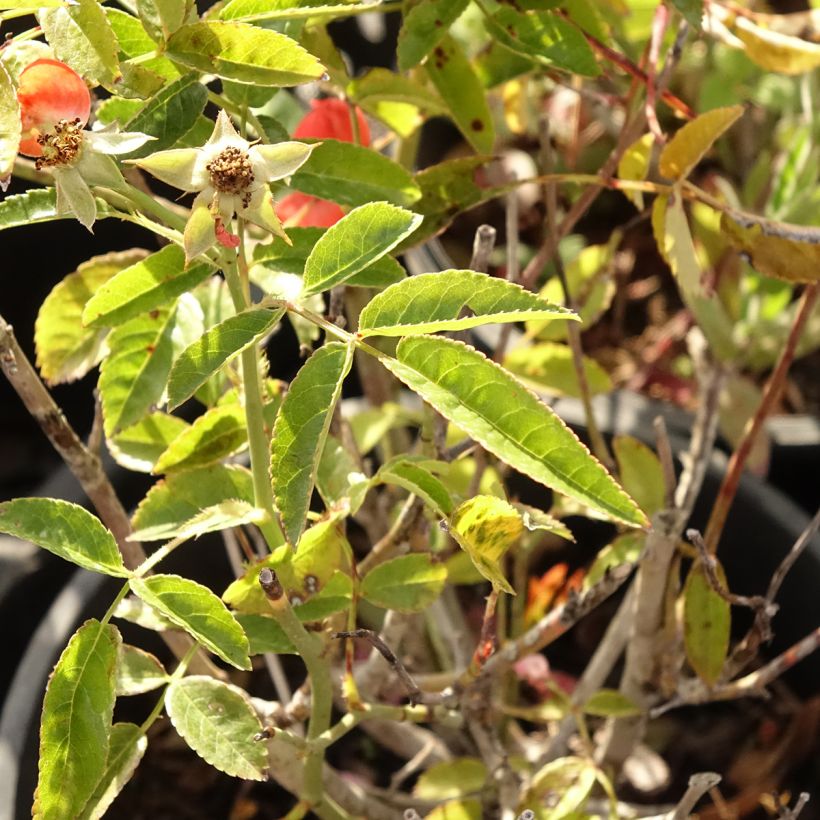

Plant habit
Flowering
Foliage
Botanical data
Rosa
x polyantha
Fête des Pères 'Koster Orange'
Rosaceae
Koster Orange, Polyantha Rose
Cultivar or hybrid
Rosa canina Laxa (Wrapped bare root, 3L/4L pot)
Planting and care
The "Father's Day" rose likes sunny locations. Too much limestone in the soil can cause chlorosis. This rose resists diseases, but if you see stained or affected leaves, remove them right away. It can handle open ground, but if it's in a pot, it's more delicate, so shield it from winter's harshness. To plant the rose, crumble the soil and place an amendment at the bottom of the hole, like blood, fish and bone. After planting, water generously to remove air pockets. Water regularly for a few weeks to help rooting. For a pot, mix garden soil and potting soil in a 1:3 ratio, and add a layer of clay beads or gravel for drainage. Under these conditions, water regularly throughout the year. In summer, cut off faded flowers frequently to encourage younger buds. Pruning means removing these flowers and reshaping the bush.
Roses may develop unsightly spots at the end of summer, but this is a natural occurrence and doesn't harm the rose's growth.
Planting period
Intended location
Care
Planting & care advice
-
, onOrder confirmed
Reply from on Promesse de fleurs
Similar products
Haven't found what you were looking for?
Hardiness is the lowest winter temperature a plant can endure without suffering serious damage or even dying. However, hardiness is affected by location (a sheltered area, such as a patio), protection (winter cover) and soil type (hardiness is improved by well-drained soil).

Photo Sharing Terms & Conditions
In order to encourage gardeners to interact and share their experiences, Promesse de fleurs offers various media enabling content to be uploaded onto its Site - in particular via the ‘Photo sharing’ module.
The User agrees to refrain from:
- Posting any content that is illegal, prejudicial, insulting, racist, inciteful to hatred, revisionist, contrary to public decency, that infringes on privacy or on the privacy rights of third parties, in particular the publicity rights of persons and goods, intellectual property rights, or the right to privacy.
- Submitting content on behalf of a third party;
- Impersonate the identity of a third party and/or publish any personal information about a third party;
In general, the User undertakes to refrain from any unethical behaviour.
All Content (in particular text, comments, files, images, photos, videos, creative works, etc.), which may be subject to property or intellectual property rights, image or other private rights, shall remain the property of the User, subject to the limited rights granted by the terms of the licence granted by Promesse de fleurs as stated below. Users are at liberty to publish or not to publish such Content on the Site, notably via the ‘Photo Sharing’ facility, and accept that this Content shall be made public and freely accessible, notably on the Internet.
Users further acknowledge, undertake to have ,and guarantee that they hold all necessary rights and permissions to publish such material on the Site, in particular with regard to the legislation in force pertaining to any privacy, property, intellectual property, image, or contractual rights, or rights of any other nature. By publishing such Content on the Site, Users acknowledge accepting full liability as publishers of the Content within the meaning of the law, and grant Promesse de fleurs, free of charge, an inclusive, worldwide licence for the said Content for the entire duration of its publication, including all reproduction, representation, up/downloading, displaying, performing, transmission, and storage rights.
Users also grant permission for their name to be linked to the Content and accept that this link may not always be made available.
By engaging in posting material, Users consent to their Content becoming automatically accessible on the Internet, in particular on other sites and/or blogs and/or web pages of the Promesse de fleurs site, including in particular social pages and the Promesse de fleurs catalogue.
Users may secure the removal of entrusted content free of charge by issuing a simple request via our contact form.
The flowering period indicated on our website applies to countries and regions located in USDA zone 8 (France, the United Kingdom, Ireland, the Netherlands, etc.)
It will vary according to where you live:
- In zones 9 to 10 (Italy, Spain, Greece, etc.), flowering will occur about 2 to 4 weeks earlier.
- In zones 6 to 7 (Germany, Poland, Slovenia, and lower mountainous regions), flowering will be delayed by 2 to 3 weeks.
- In zone 5 (Central Europe, Scandinavia), blooming will be delayed by 3 to 5 weeks.
In temperate climates, pruning of spring-flowering shrubs (forsythia, spireas, etc.) should be done just after flowering.
Pruning of summer-flowering shrubs (Indian Lilac, Perovskia, etc.) can be done in winter or spring.
In cold regions as well as with frost-sensitive plants, avoid pruning too early when severe frosts may still occur.
The planting period indicated on our website applies to countries and regions located in USDA zone 8 (France, United Kingdom, Ireland, Netherlands).
It will vary according to where you live:
- In Mediterranean zones (Marseille, Madrid, Milan, etc.), autumn and winter are the best planting periods.
- In continental zones (Strasbourg, Munich, Vienna, etc.), delay planting by 2 to 3 weeks in spring and bring it forward by 2 to 4 weeks in autumn.
- In mountainous regions (the Alps, Pyrenees, Carpathians, etc.), it is best to plant in late spring (May-June) or late summer (August-September).
The harvesting period indicated on our website applies to countries and regions in USDA zone 8 (France, England, Ireland, the Netherlands).
In colder areas (Scandinavia, Poland, Austria...) fruit and vegetable harvests are likely to be delayed by 3-4 weeks.
In warmer areas (Italy, Spain, Greece, etc.), harvesting will probably take place earlier, depending on weather conditions.
The sowing periods indicated on our website apply to countries and regions within USDA Zone 8 (France, UK, Ireland, Netherlands).
In colder areas (Scandinavia, Poland, Austria...), delay any outdoor sowing by 3-4 weeks, or sow under glass.
In warmer climes (Italy, Spain, Greece, etc.), bring outdoor sowing forward by a few weeks.






































